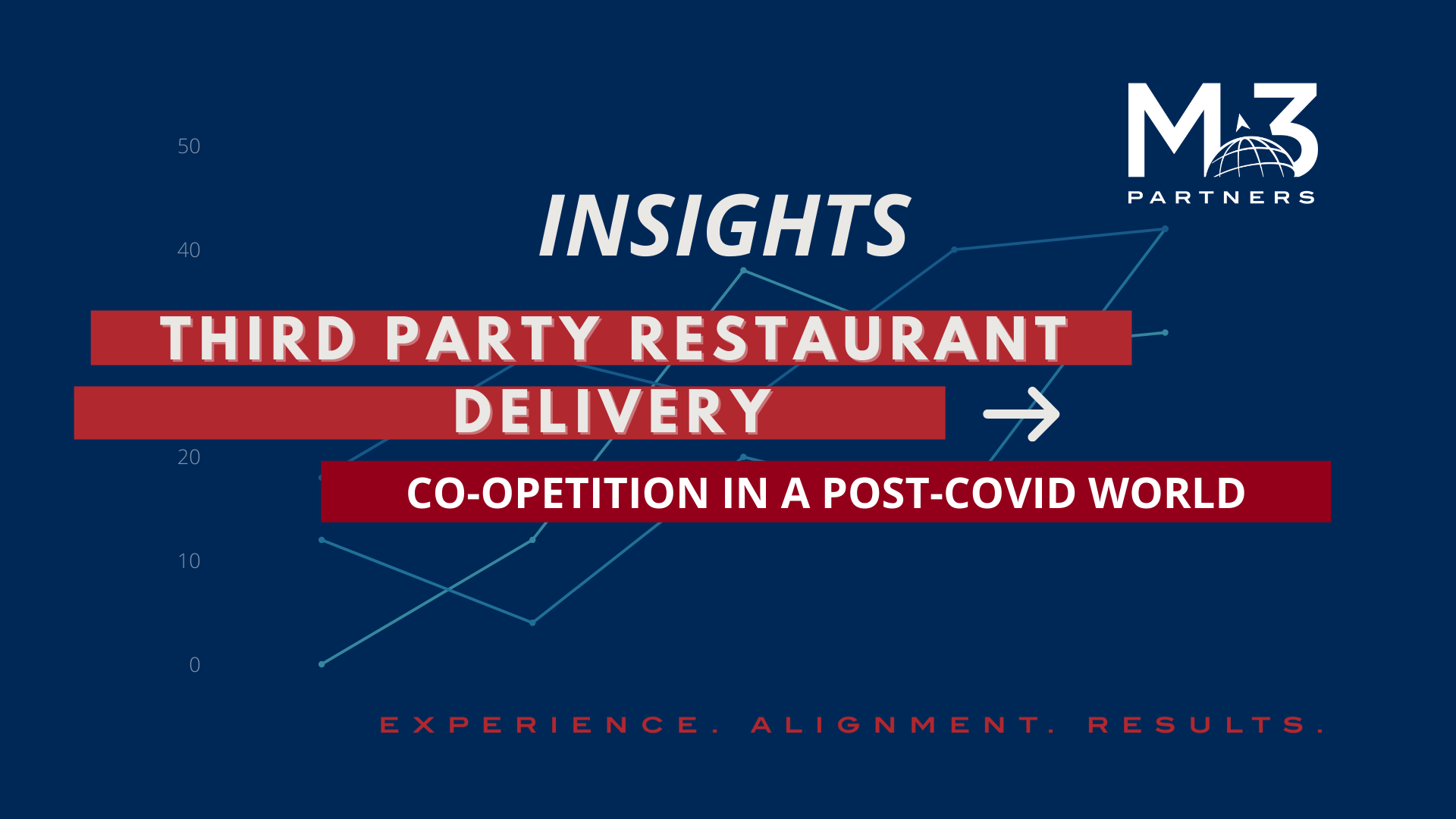The restaurant industry was devastated by COVID-19 and, even as of November 2021, over 30% of diners remained uncomfortable dining out.
Delivery, largely through third-party delivery platforms (“platforms”), provided a lifeline to mitigate losses and maintain customers, but as the world returns to normal, will online delivery help or hinder a dine-in recovery?
The Age of Apps
Online food delivery sales jumped 40% from 2019 and investors have taken notice, with $2.4 billion raised by delivery start-ups in 2Q21 alone. Consolidation in the sector is rampant, and since 2019, more than $27 billion in transactions have been completed. Doordash, the largest player by market-cap, recently announced the $8.1 billion acquisition of European-based Wolt. For these platforms, scale is key to success, driven by the ability to monetize order data and last-mile capabilities efficiently and effectively.
The Fox in the Henhouse
Beyond pricing and consent issues, rising traffic on delivery platforms also increases risks for restaurant partners through poor customer experience and a growing data imbalance.
Restaurateurs invest heavily on customer experience – from store location to furnishings, staff training, and other factors. Through the use of platforms, restaurants rely on third parties to power the customer experience, often to their detriment. Menus are not displayed the same way as in the restaurant, promotions and recommendations may be different, and restaurants have limited control over how meals are handled and presented on delivery.
Platforms now control item-level data (food, drink, and consumer details) in ways no restaurant or chain has before. This data imbalance makes restaurants dependent on these platforms for marketing, while increasing risk of losing traffic to another paid search if they do not. This feedback loop raises ad costs while not necessarily driving net growth. And while the delivery platforms have not announced plans for their own branded restaurants, they fully understand what, how, and when diners eat. Similar disruption in other sectors (e.g., AmazonBasics) has been significant. Doordash recently tested a concept kitchen to replicate menus for certain restaurant partners – it may only be a matter of time before they expand competition in unforeseen ways (such as enabling nation-wide delivery of chosen partners) or compete directly.
Survival Playbook
Despite the significant risks presented, delivery platforms and native delivery capabilities can provide an accretive solution to restaurants. For example, a recent QSR analysis reported 50%+ higher average check sizes for delivery purchases versus in-store or drive-thru. While some major players (e.g., Darden) have said they will not pursue delivery, most operators need a playbook to mitigate risks and optimize profitability and we propose the following:
Capture Customer Traffic
-
-
Optimize web presence for the online/delivery customer – interactive menu, rich descriptions, photos, and updated listings (e.g., rotating specials)
-
Drive traffic to your site with things like search engine optimization or QR inserts on deliveries
-
Identify which platform(s) to compete in and optimize pricing based on target customers
-
Enable Perfect Experience
-
-
Curate delivery food and beverage menu to ensure items are “travel-friendly”
-
Package deliveries to increase food quality, presentation, and perceived value (e.g., premium containers, moisture- and temperature-controlled packaging, plating instructions)
-
Offer premium add-ons to add to ticket prices
-
Manage Utilization and Cost
-
-
Adjust pricing and promotion levers to maximize kitchen and/or delivery fleet utilization
-
Optimize delivery platform costs– evaluate customer acquisition costs versus lifetime value to optimize profitability
-
Evaluate fulfilling deliveries directly and optimize delivery zones
-
